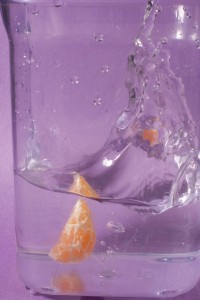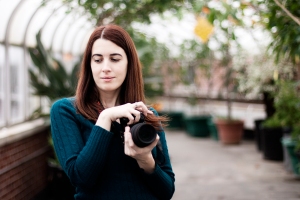An article popped up in my news feed this morning that is kind of scaring me as an artist. Ok, it’s kinda scaring me a lot.
The article, found here (which discusses the original article in Amateur Photographer here) discusses a case in the UK where an image was declared to be a copyright infringement despite the fact that it looks rather different than the original. Now it just so happens that in a previous life I was trained and worked as a paralegal, so I actually went through and read the entire judgment (which can be found here.) I won’t claim to understand all of it – it’s been a while since my brain has had to wade through legal jargon – but I found little in it to assuage my fears. Granted, this is a UK decision and has little direct bearing on copyright law in Canada, but I worry it could set a disturbing precedent.
My albeit cursory examination of the document leads me to believe that the judge relied fairly heavily on the intent of the parties in this case. This may be because there was a previous dispute between these two parties over infringement of the same image. I haven’t been able to find that judgment (and I doubt that my brain could handle reading another lengthy legal article at this point), but it seems that the defendant in this case was also found to be infringing in the previous case. So, the second image was made specifically with the intent of having a similar image without infringing. This does seem rather sneaky to me, and as an artist I certainly wouldn’t want someone copying me just enough so as not to get caught (or have to pay me for my work and vision). It also appears that the defendant was given the opportunity to licence the original image in question from the photographer, but declined. (Also strange, but without more details I really can’t comment much on that.)
Here are the images in question, as taken from the legal decision document.
The first is the claimant’s image, taken by Mr. Fielder for Temple Island Collections Limited in August of 2005.

The second image was commissioned by the defendant, Mr. Houghton of New English Teas and created by Sphere Design, with photos from Mr. Houghton and a stock photo.

To me, there are significant differences between these two images. The perspective and shot angle are different, as are the architectural elements included. The main similarities are the selective colouring, the general location and the subject. This may sound like a lot, but take into account what the subjects are: Big Ben, the Houses of Parliament, and a double-decker bus. These are all iconic landmarks in London, and the claimant (the original photographer) certainly wasn’t the first person to make an image in that location. It is even stated in the claim that he was standing surrounded by other photographers when he took the picture. Some of the images shot by others on the scene that day are bound to be more similar than the infringing image. You certainly can’t argue that the selective colour is unique either – in the claim, the photographer admits to being inspired by the colouring in Schindler’s List, and the defendant was able to produce as evidence several other photographs of significant London landmarks using selective colour.
I really don’t like that the defendant’s image was created with the express purpose of re-creating the original as closely as possible without getting in trouble, but in the end, it is a different image, and I really don’t see how the similarities the judge noted outweigh the differences. I don’t really like the defendant’s version, I think the original is a much stronger image (and I seriously wonder why they didn’t decide to licence the image if/when given the opportunity) but I don’t necessarily think that it should be considered an infringement. In the Amateur Photograph article, photographic copyright expert Charles Swan, a lawyer at Swan Turton, noted that “‘Inspiration’ and ‘reference’ are fine in themselves, but there is a line between copying ideas and copying the original expression of ideas which is often a difficult one to draw.”
It is a difficult line to draw. No artist wants their work stolen, and they should be protected and have legal recourse when that happens. But the precedent set here gives a wide open definition to what can be considered ‘copying’. And that’s what really worries me. Part of being a photographer is looking at LOTS of images – being inspired by them and getting ideas from what others have done before. Learning by attempting to reproduce a certain technique is one of the key ways to grow as an artist. There are many examples of visionaries and artists advocating the value of “stealing” for this reason. Photographer Chase Jarvis wrote a post titled “How to Steal Ideas Like an Artist” where he states “The history of art is … an evolution of ideas, of appropriation and application”. Steve Jobs admits to “be[ing] shameless about stealing great ideas.” You can see the YouTube video of that here where he quotes Picasso: “good artists copy, great artists steal.” There are even classes in universities teaching painting by copying the Masters: by learning how DaVinci, Rembrandt and Monet painted, you become more skilled and build the basis for your own visual language. The key to all of this is that your individuality as an artist (or just as a person with a unique perspective on life) will prevent you from directly mimicking the work.
Perhaps the line between the idea of copying for learning and copying for money-saving or licence-avoiding is too fine a line to draw. But consider cases of more accidental similarities: I look at several photography websites every day for inspiration, new tips and just a daily dose of beauty. I probably see 30+ images in a day, much more if I’m bored or researching a particular topic. I don’t remember every single image that I’ve seen, but they inform my sensibilities nonetheless. My intent is always to explore and expand upon my artistic vision, not to copy someone else’s work. But if an image I create ends up looking similar to another image, would this new precedent make me the target of a lawsuit for infringement?
And that’s where I see a big potential problem here.
p.s. I should mention that (of course) my training as a paralegal does not qualify me in any way shape or form to provide a legal opinion on this matter, it just makes it almost possible for me to read through the judgment’s legalese without going completely cross-eyed.


















